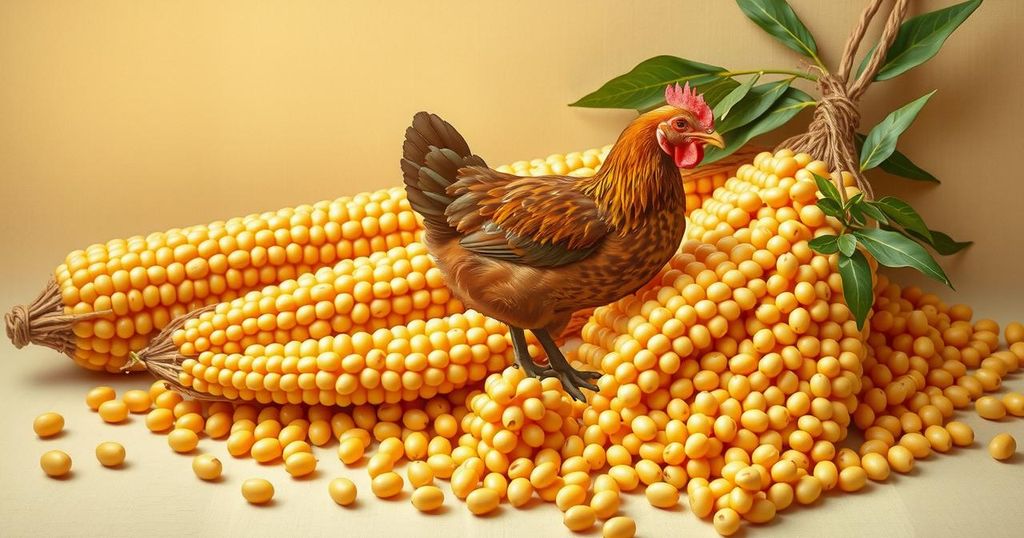Impact of High Soybean Prices on Poultry Production in East and Southern Africa

Rising soybean prices in Zambia and Malawi pose significant challenges to poultry production, impacting small-scale producers more severely than larger competitors. Market concentration and climate challenges have contributed to increased soybean prices, hindering the affordability of poultry feed. Urgent reforms are needed to address competition issues to protect this vital protein source for the region’s growing population.
The poultry industry serves as a vital and affordable protein source for the growing populations in East and Southern Africa, heavily relying on soybeans for chicken feed. However, rising soybean prices in Zambia and Malawi threaten poultry production by limiting affordability and competitiveness, particularly impacting small-scale independent producers who purchase feed from the open market.
Zambia and Malawi are significant soybean producers in the region; however, their production has faced major challenges, including climate change-related weather issues and market dynamics. Zambia’s soybean output plummeted by 74%, while Malawi’s decreased by 20% due to similar adverse conditions, coupled with market concentration that affects pricing.
In Zambia, large buyers of soybeans have historically offered farmers very low prices, leading to reduced planting. This was compounded by drought conditions that further diminished crop yields. Conversely, Malawi’s soybean prices surged by 48% despite a relatively milder decrease in production, indicating severe market concentration issues.
The poultry market in sub-Saharan Africa is expected to expand significantly, indicating an urgent need for affordable feed. Small independent producers, who rely on competitive markets for their inputs, are currently facing negative margins due to the skyrocketing feed prices in Malawi and high costs for day-old chicks. Without competitive pricing, their viability is under threat.
Zambia experienced a remarkable increase in soybean production from 297,000 to 650,000 tonnes between 2020 and 2023, only to witness a catastrophic decline in 2024 due to low processor prices. Farmers faced pressure to sell shortly after harvest, often in a highly concentrated market dominated by a few processors who impose their pricing.
High soybean prices continue to challenge the affordability of poultry, particularly in Malawi where prices surged beyond $900/tonne, unlike Zambia’s more stabilized prices due to imports and reduced domestic demand from the processing sector. This highlights the critical need for addressing competition issues that impact regional food markets, particularly the resilience of small producers against price inflation.
As Zambia initiates inquiries into its poultry market, addressing regional anti-competitive behaviors will be crucial for sustaining poultry production across East and Southern Africa. Evaluating market dynamics and fostering competition is essential to ensure food security and the stability of poultry pricing amid challenges posed by climate change.
The growing poultry sector in East and Southern Africa is in jeopardy due to escalating soybean prices in Zambia and Malawi, exacerbated by market concentration and climate challenges. Small-scale producers, particularly in Malawi, are struggling with negative margins while larger producers adjust strategies in response to fluctuating soybean costs. Effective interventions must include tackling anti-competitive practices and ensuring the resilience of regional food markets to secure affordable poultry production for the future.
Original Source: theconversation.com








